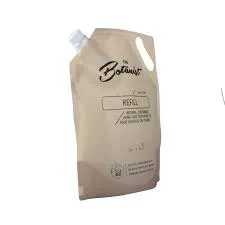- Afrikaans
- Albanian
- Amharic
- Arabic
- Armenian
- Azerbaijani
- Basque
- Belarusian
- Bengali
- Bosnian
- Bulgarian
- Catalan
- Cebuano
- chinese_simplified
- chinese_traditional
- Corsican
- Croatian
- Czech
- Danish
- Dutch
- English
- Esperanto
- Estonian
- Finnish
- French
- Frisian
- Galician
- Georgian
- German
- Greek
- Gujarati
- haitian_creole
- hausa
- hawaiian
- Hebrew
- Hindi
- Miao
- Hungarian
- Icelandic
- igbo
- Indonesian
- irish
- Italian
- Japanese
- Javanese
- Kannada
- kazakh
- Khmer
- Rwandese
- Korean
- Kurdish
- Kyrgyz
- Lao
- Latin
- Latvian
- Lithuanian
- Luxembourgish
- Macedonian
- Malgashi
- Malay
- Malayalam
- Maltese
- Maori
- Marathi
- Mongolian
- Myanmar
- Nepali
- Norwegian
- Norwegian
- Occitan
- Pashto
- Persian
- Polish
- Portuguese
- Punjabi
- Romanian
- Russian
- Samoan
- scottish-gaelic
- Serbian
- Sesotho
- Shona
- Sindhi
- Sinhala
- Slovak
- Slovenian
- Somali
- Spanish
- Sundanese
- Swahili
- Swedish
- Tagalog
- Tajik
- Tamil
- Tatar
- Telugu
- Thai
- Turkish
- Turkmen
- Ukrainian
- Urdu
- Uighur
- Uzbek
- Vietnamese
- Welsh
- Bantu
- Yiddish
- Yoruba
- Zulu
Creative Designs for Effective Countertop Displays That Capture Customer Attention
The Importance of Countertop Displays in Retail Marketing
Countertop displays have emerged as a vital tool in the retail marketing landscape, serving both functional and aesthetic purposes. These displays, typically placed on counters or at eye level, are designed to attract attention and promote products effectively. With the retail environment becoming increasingly competitive, the strategic use of countertop displays can significantly enhance customer engagement and boost sales.
One of the primary advantages of countertop displays is their accessibility. Positioned at eye level, these displays allow customers to easily see and reach the products. This convenience often leads to impulse buys, as shoppers may not have intended to purchase the displayed items but are drawn in by their visibility and accessibility. For example, placing small, attractive packaging of snacks, candies, or travel-sized toiletries on a countertop can encourage last-minute additions to a purchase, increasing the average transaction value.
Moreover, countertop displays can be customized to reflect a brand's identity and messaging. Retailers can design displays that align with their overall branding, utilizing colors, logos, and themes that resonate with their target audience. A well-designed display not only draws attention but also communicates the brand’s story, creating an emotional connection with customers. This is particularly important in today's market, where consumers are increasingly seeking authenticity and brands that align with their values.
The versatility of countertop displays is another key benefit. They can be used in various retail settings, from grocery stores and pharmacies to boutiques and convenience stores. Depending on the products being promoted, displays can be designed to highlight seasonal offerings, new arrivals, or promotional items. For instance, during the holiday season, a countertop display featuring seasonal treats or gift ideas can significantly enhance a retailer's sales. In contrast, a health-focused display in a pharmacy showcasing vitamins and supplements can appeal to health-conscious customers.
countertop display

In addition to enhancing product visibility, countertop displays also serve as excellent marketing platforms for cross-promotions. By strategically placing related products together, retailers can encourage customers to purchase more items. For instance, a countertop display for coffee could include space for flavored syrups or complementary snacks, enticing customers to consider multiple purchases. This tactic not only maximizes the retail space but also increases the likelihood of additional sales.
Furthermore, the integration of technology into countertop displays can elevate their effectiveness. Digital displays, QR codes, or interactive elements can engage customers in a more dynamic way, providing information about products, promotions, or even brand stories. These technologically advanced displays cater to the growing reliance on digital information among consumers, offering an innovative approach to traditional retail methods.
Effective use of countertop displays also necessitates regular updates and changes to keep the customer experience fresh and exciting. Rotating products based on trends, seasons, or sales data can maintain customer interest and drive repeat visits. Regularly refreshed displays signal to consumers that the retailer is active and responsive to market changes, further enhancing brand loyalty.
In conclusion, countertop displays play an essential role in the retail marketing strategy. Their ability to attract attention, enhance product visibility, and drive impulse purchases makes them invaluable to retailers looking to increase sales. When designed thoughtfully, these displays not only beautify a retail space but also contribute to a compelling shopping experience that engages consumers and encourages brand loyalty. As the retail landscape continues to evolve, the importance of innovative countertop displays will undoubtedly remain significant in capturing consumer interest and driving sales.













